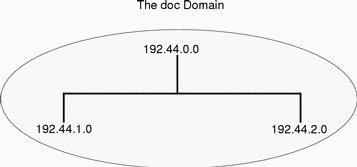NIS Introduction
NIS is a distributed name service. It is a mechanism for identifying and locating network objects and resources. It provides a uniform storage and retrieval method for network-wide information in a transport-protocol and media-independent fashion.
By running the service, the system administrator can distribute administrative databases, called maps, among a variety of servers (master and slaves), and update those databases from a centralized location in an automatic and reliable fashion to ensure that all clients share the same name service information in a consistent manner throughout the network. For additional overview and background information on NIS, see "NIS".
NIS was developed independently of DNS and has a slightly different focus. Whereas DNS focuses on making communication simpler by using machine names instead of numerical IP addresses, NIS focuses on making network administration more manageable by providing centralized control over a variety of network information. NIS stores information not only about machine names and addresses, but also about users, the network itself, and network services. This collection of network information is referred to as the NIS namespace.
Note -
In some contexts machine names are referred to has host names or workstation names. This discussion uses machine, but some screen messages or NIS map names may use host or workstation.
NIS Architecture
NIS uses a client-server arrangement. NIS servers provide services to NIS clients. The principal servers are called master servers, and for reliability, they have backup, or slave servers. Both master and slave servers use the NIS information retrieval software and both store NIS maps.
NIS uses domains to arrange the machines, users, and networks in its namespace. However, it does not use a domain hierarchy; an NIS namespace is flat. Thus, this physical network:

would be arranged into one NIS domain:

A NIS domain cannot be connected directly to the Internet using just NIS. However, organizations that want to use NIS and also be connected to the Internet can combine NIS with DNS. You can use NIS to manage all local information and use DNS for Internet host lookup. NIS provides a forwarding service that forwards host lookups to DNS if the information cannot be found in a NIS map. The Solaris operating environment also allows you to set up the nsswitch.conf file so that hosts lookup requests go only to DNS, or to DNS and then NIS if not found by DNS, or to NIS and then DNS if not found by NIS. (See Chapter 2, The Name Service Switch, for details.)
NIS and NIS+
Both NIS and NIS+ perform some of the same tasks. NIS+, however, allows for hierarchical domains, namespace security, and other features that NIS does not provide. For a more detailed comparison between NIS and NIS+, see "How NIS+ Differs From NIS".
You can use NIS in conjunction with NIS+ under the following principles and conditions:
-
Servers within a domain. While you can have both NIS and NIS+ servers operating in the same domain, doing so is not recommended for long periods. As a general rule, using both services in the same domain should be limited to a relatively short transition period from NIS to NIS+. If some clients need NIS service, you can run NIS+ in NIS compatibility mode as explained "Solaris 1.x Releases and NIS-Compatibility Mode".
-
Subdomains. If the master server of your root domain is running NIS+, you can set up subdomains whose servers are all running NIS. (If your root domain master server is running NIS, you cannot have subdomains.) This might be useful in situations where you are moving from NIS to NIS+. For example, suppose your enterprise had separate, multiple NIS domains, possibly at different sites. Now you need to link them all together into a single, hierarchical multi-domain namespace under NIS+. By first setting up the root domain under NIS+, you can then designate the legacy NIS domains as sub-domains that continue to run NIS until it is convenient to switch them over to NIS+.
-
Machines within a domain.
-
If a domain's servers are running NIS+, individual machines within that domain can be set up to use either NIS+, NIS, or /etc files for their name service information. In order for an NIS+ server to supply the needs of an NIS client, the NIS+ server must be running in NIS-Compatibility mode as described in Solaris Naming Setup and Configuration Guide.
-
If a domain's servers are running NIS, individual machines within that domain can be set up to use either NIS or /etc files for name services (they cannot use NIS+).
-
Which service a machine uses for various name services is controlled by the machine's nsswitch.conf file. This file is called the switch file. See Chapter 2, The Name Service Switch for further information.
NIS and FNS
Under certain conditions, FNS commands can be used by NIS clients to update naming information that pertains to them such as file systems and printers. (See "NIS Clients Can Update Contexts With FNS if SKI is Running" for details.)
- © 2010, Oracle Corporation and/or its affiliates
